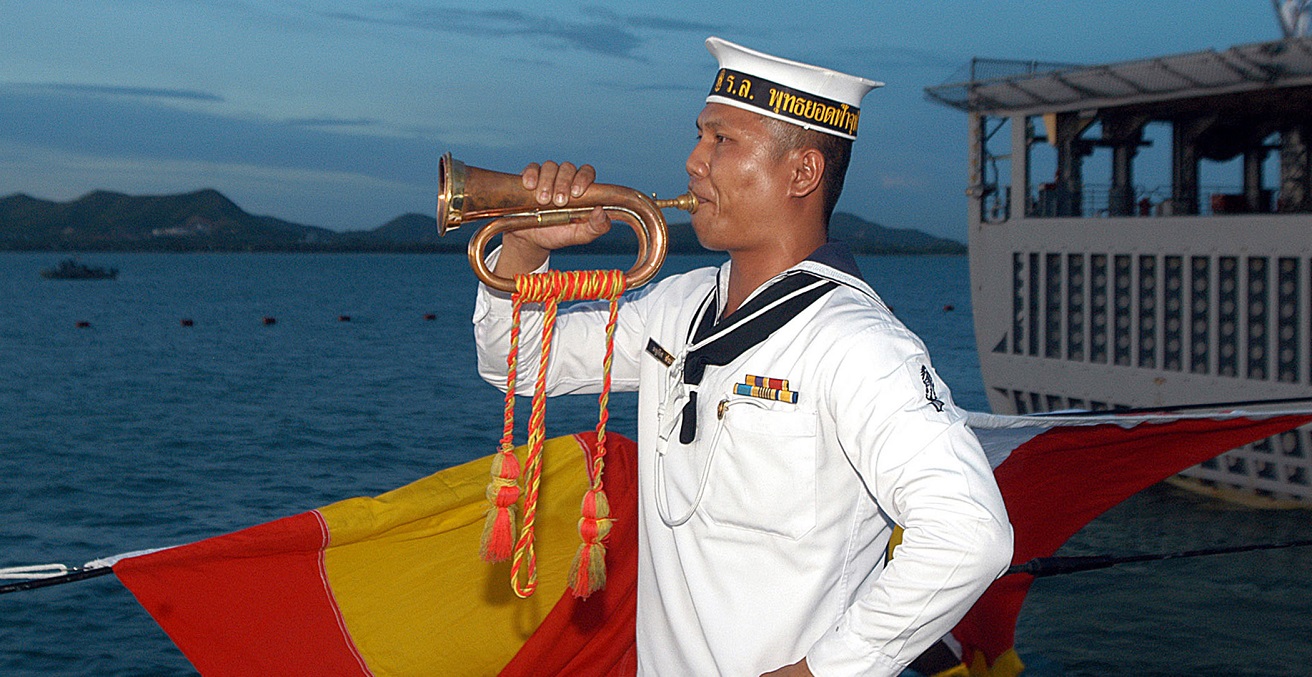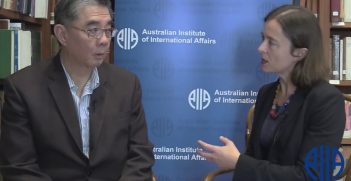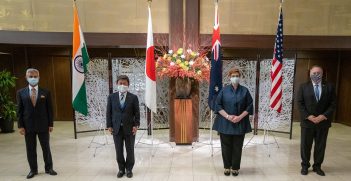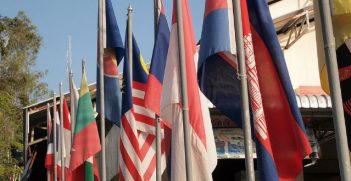ASEAN Navies Set Sail in 2017

In 2017’s changing maritime security environment, the 50th anniversary of ASEAN saw the group hold its first multilateral naval exercise. So what is the naval potential of its diverse membership?
This has been a momentous year for the 10-member Association of Southeast Asian Nations—better known as ASEAN—which marked its 50th anniversary this year with much revelry, including events that harkened to its maritime imperative.
In November, the diverse bloc, which includes rich and poor nations, and which has a combined GDP of USD$2.56 trillion (AUD$3.56 trillion) and a population of 639 million, held an International Fleet Review (IFR). The event included the first ever ASEAN Multilateral Naval Exercise, or AMNEX, and the 11th ASEAN Navy Chiefs’ Meeting.
While nine ASEAN members—namely, Brunei Darussalam, Cambodia, Indonesia, Malaysia, Myanmar, Philippines, Singapore, Thailand and Vietnam (landlocked Laos operates only a Riverine Force)—participated in AMNEX, the actual fleet review featured these nine navies, as well as 10 invited non-ASEAN navies: India, the United States, China, Russia, Japan, South Korea, Australia, Sri Lanka, Bangladesh and Pakistan. Twenty-one additional countries were represented by their naval officials.
Established on 8 August 1967 in Bangkok with the signing of the ASEAN Declaration (Bangkok Declaration), this grouping abuts onto a littoral rendered volatile by a confrontational China determined to dominate the South and East China seas and beyond, and an intransigent North Korea that unreservedly flaunts its nuclear and conventional clout.
Beijing’s claims of sovereignty over the region have sparked disputes with Vietnam, the Philippines, Malaysia and Brunei over the Paracel and Spratly island chains; and with the Philippines also over the Scarborough/Panatag Shoal.
ASEAN navies have been characteristically compact, with dominant military rulers prioritising their armies above the navies for combating internal strife and transboundary challenges. Only Singapore exercises civilian control over its army. As a consequence, indigenous warship production generally has remained weak, necessitating overseas procurements.
Whereas larger economies in the region, like Japan and South Korea, pursue robust naval agendas through their formidable warship-building enterprises, ASEAN countries have been mostly content to shield themselves behind the extensive US naval presence in the region. These countries may now have to rethink, with the Trump administration committing to cut costs and while seeking to make partner countries pay their share of joint security efforts.
Already Malaysia, Thailand, Philippines and Cambodia are gravitating towards China. In November 2016, Kuala Lumpur signed its first defence deal with Beijing for the$272-million construction of four littoral mission ships: two at the China Shipbuilding Industry Corp. (CSIC) and two at Malaysia’s Boustead Naval Shipyard. The two Chinese-made vessels are scheduled for delivery in 2019 and 2020 and the other two, by 2021.
Thailand has also entered into a deal with Beijing for the delivery of three Yuan Class S26T submarines to the Royal Thai Navy (RTN), valued at$1.06-billion, over the next 11 years. Thai personnel will also be trained by the Chinese and a facility will be set up jointly in Thailand to manufacture and repair military equipment.
Philippines
Numerous platforms are being inducted under the Armed Forces of the Philippines Modernisation Programme spanning three stages: 2013-2017, 2018-2022 and 2023-2028. The first stage, 2013-2017, had a budget of $1.7 billion, while the second has been allocated $1.97 billion. Three of the 12 Hamilton-class high-endurance cutters that served the US Coast Guard from 1967 to 1972 were acquired by Manila, after upgrades, between 2011 and 2016 and are currently the most capable warships of the Philippine Navy (PN).
The PN deepened its sealift capability a year ago with three Landing Craft Heavy auxiliary vessels gifted by Australia at a ‘friendship price’ of $5.3 million. These were in addition to the two it donated the previous year. They will be used for humanitarian assistance and disaster relief and for troop transport during amphibious operations.
In May, PN also commissioned three indigenous missile-capable multipurpose attack craft, its first gunboats with high littoral combat capabilities. The navy has also received the second of two Strategic Sealift Vessels contracted for $92 million.
Cambodia
After its unprecedented joint naval drill with China last year, despite a prolonged territorial dispute, in April Cambodia ejected the US Navy Mobile Construction Battalion—the Seabees—after the American aid unit had been there for nine years. It also called off the joint military exercises that had been scheduled for June.
China conferred seagoing capability to the Royal Khmer Navy when it handed over 15 fast patrol craft between 2005 and 2007. The navy also operates five torpedo fast attack craft and six patrol fast attack craft of Soviet vintage, alongside around 170 motorised and manual canoes. The impoverished country has made little progress on fulfilling the demands of a 2000 defence white paper that called for transformation of the navy from one focused on riverine operations to patrolling of the coastline and nearby islands.
Brunei
Even Brunei made overtures to Beijing when its naval commander made an ‘introductory visit’ to China in April to discuss training exchanges, sea exercises and port visits, and to plan a PLA-N visit to Brunei in September. The country’s Boat Section, formed in 1965, grew to be the First Flotilla, renamed as the Royal Brunei Navy in 1991. It is a small but reasonably well-equipped force with the main responsibility to conduct search and rescue missions and coastal defence.
Indonesia
The largest ASEAN economy and the foremost military power of the bloc, Indonesia budgeted $8.3 billion in 2016 towards military modernisation. Even before this, in 2012, Dutch company DSNS was contracted by Indonesia to be able to have two of its SIGMA 10514 frigates built by domestic shipbuilder PT PAL. These 2,365-tonne multi-mission frigates, delivered in January and October 2017, are now the most advanced surface combatants in the Indonesian Navy.
Jakarta also concluded a $1.07 billion deal in 2011 with a South Korean shipyard to supply two Type 209/1400 Improved Chang Bogo class attack submarines, with a third to be built by PT PAL under technology transfer.
Singapore
Singapore, ASEAN’s wealthiest nation, is also its highest spender on defence, budgeting $9.7 billion in 2016. It is now rationalising its naval force structure. The Littoral Mission Vessel, RSS Independence, the first of the next generation warships completely designed and built in Singapore, joined the Republic of Singapore Navy (RSN) as it celebrated its 50th anniversary on 5 May 2017. A total of eight LMVs will replace RSN’s 11 ageing patrol vessels by 2020.
RSN is today a fully-fledged third generation navy that has submarines, frigates, maritime patrol aircraft and unmanned vessels and aircraft. The navy is also working towards a fleet of fully autonomous Mine Countermeasure Unmanned Surface Vessels by 2020, with two such craft undergoing operational testing. Two Type 218SG submarines will be delivered from Germany beginning in 2021, with two more likely to be ordered.
Vietnam
Vietnam has also assembled a credible submarine force, comprising six Improved Kilo Class P-636 Varshavyankas in one of Russia’s largest naval export orders, of $3.2 billion. These submarines entered service between January 2014 and January 2017.
Hanoi undertook its force modernisation between 2010 and 2015 when it received additional Tarantul 5 corvettes, two Gepard-class guided missile frigates and six Svetlyak-class missile patrol boats.
Myanmar
The modest Myanmar Navy (MN) is aspiring to evolve out of its coastal limitations into seagoing credentials. Its modest force is essentially built around its flagships: the Aung Zeya class guided missile frigate F11, commissioned in 2011, built locally with Indian assistance; and the Anawrahta Class corvette UMS 771, commissioned in 2001 and built locally with Chinese assistance. The Aung Zeya was followed by two indigenous Kyan Sittha class frigates, commissioned in 2014 and 2015 with electronic suite and weaponry systems sourced from India, China and Russia.
In December 2016, MN commissioned several new vessels, including its third indigenous guided-missile corvette, a troop transport ship and six landing craft mechanised. It also received two second-hand Chinese Type 053/Jianghu II-class light frigates in 2012. Though Myanmar is one of Southeast Asia’s poorest countries, it has announced a plan to buy one or possibly two submarines, if its financial situation so permitted.
ASEAN navies have refrained from intervening in any maritime disputes that have confronted their partner states. This approach is not foreseen to change even following this all-round naval modernisation, as it will likely remain “every navy for itself”.
Sarosh Bana is executive editor of Business India, published from Mumbai, and writes on policy, politics, strategy, defence, energy, and foreign affairs.
This article is published under a Creative Commons Licence and may be republished with attribution.





